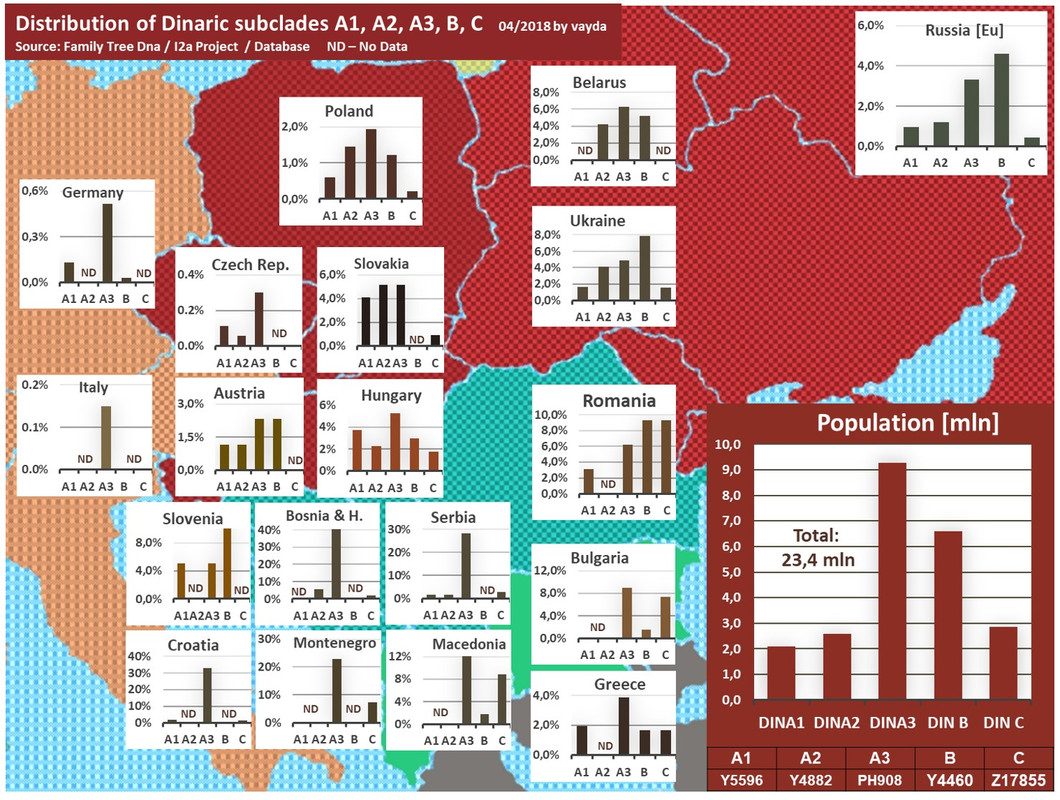mihaitzateo
Regular Member
- Messages
- 943
- Reaction score
- 98
- Points
- 0
- Location
- Bucharest
- Ethnic group
- Romanian
- Y-DNA haplogroup
- proly R1B
You are not bursting my bubbleSorry to burst your bubble but CTS10228 is Slavic. The disparity from autosomal to ydna could be explained by the fact that there is VERY LITTLE diversity in CTS10228 found in South Slavs. Suggesting they descend from a few common ancestors. Explaining why they have higher native admixture, but higher slavic YDNA due to the fact that they were successful in producing progeny.
I know that highest diversity of I2-CTS10228 is Carpathians from Moldavia.On the actual land of Romania.
Romanians and South Slavs are actually a lot more Western shifted that Poles.
And is known that Poles are having plenty of West German admixture and Baltic people admixture.
But, these Autosomal tests are reducing ethnicities to some not so refined calculus.
For example, Goths brought in Spain R1A clades.
If a Slav or a Baltic person was joining the Goths and live with them, for 100 years and his children were speaking Gothic as native language, were they anymore Slavs?
I think they were also East Germanics as ethnicity.
I highly doubt ethnicity is given only by maternal language, but by a lot more things.
A simple question, regarding the Croatians and Bosnians is why they always kept themselves away from Russians if they are so Slavs?
They speak a language with most of the words of Slavic origin, but is that enough to make them Slavs?
Ex-Yugos are preferring for migration in our days Germany or Italy, not Poland.
Why?
Ex-Yugos also mass-migrated to Austria.
I think the fact that South Slavs prefer to migrate in Germany and Austria shows quite clear they are actually still East Germanics, as ethnicity even if they speak a South Slavic language.
They have not been Slavizied enough.
In the history is told that Italy has a lot of influence from East Germans, while Spain was formed as a state by the Visigoths and Goths.
There is a clear thing,that Slavs had carried R1A clades and some North Germanics had also R1A - Norse, is also known Baltic speakers had R1A clades.
As for R1A in the Germanic people, except R1A-Norse seems to have come from assimilated Slavs and Baltic people, assimilated Scythian people etc.
I do not want to offend anyone, but today Poland is a very rich and peaceful state, which offers a lot more opportunities than Austria or Italy, for example.
However, you will see no ex-Yugos migrating to Poland instead you will see lots of ex-Yugos migrating to Germany, or going to work there and also, to Austria and Italy.
Why?
What is the logic behind the way in which South Slavs are making such a choice?
Another question, regarding the Romanians, this time, Romanians prefer to migrate most to Italy, 2nd-3rd to Germany and Spain.
Austria is also very liked by Romanians and UK, US are also on the list.
As for Russia , not even 1% of Romanians would like to go naturalize there. Poland, quite same.
Trust me, is not about money, because are Romanians that go to work on low salaries in Germany and take welfare instead of staying in Romania where they would have better conditions.
Same about Romanians going to Italy.
People are calling these things with the generic term "cultural differences".
Now, is not the "cultural differences" part of your ethnicity?
And if actually "cultural differences" are the more important factor for which someone can live and assimilate in a country, are not cultural differences more important than paternal lines?
How could I believe that some people living in swamps (the Slavs) came and started to live in the mountains, where are no plains, no swamps, as it is the case with Serbians, Croatians, Bosnians and Montenegrins and Macedonians?
I noticed a thing, that ex-Yugos have all their big cities near mountains.
Russians,Ukrainians, Poles do not have big cities near the mountains.
They actually have a fear of mountains.


